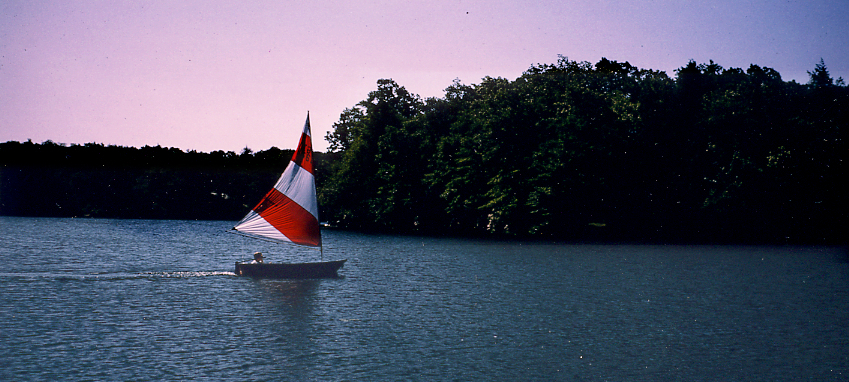
Whether you have lived at Lake Waubeeka for 50 years or five days, we hope you share our passion for keeping our beautiful lake healthy and free of invasive species.
Watch out for “hitchhikers” getting a ride on your boats, floating devices and fishing gear
You’ve probably noticed the signs at the gates and the beaches warning against transporting zebra mussels and their larvae.

In the November 4, 2016 edition of The News Times, it was reported that they had been discovered near Candlewood Lake. The article stated,
“As the invasive mussels proliferate, they consume so much algae and plankton that they disrupt the food chain. And while they help to clear the water, they create another problem…by promoting the growth of invasive plant species like Eurasian watermilfoil.”

Photo credit: By Daniel Case, CC BY-SA 3.0
Aside from zebra mussels, there are many other invasive aquatic species that we must prevent from entering Lake Waubeeka. The best and only way to do that is to not allow access to any other boats aside from the ones we keep on our shores. We particularly want to stress that any stand-up paddleboards you use on Lake Waubeeka should not be used on other bodies of water because—like boats—paddle boards and other floating devices can also transport invasive species.
 Do not allow your guests to bring boats or boards or recently-used fishing gear into the lake. Most of the species such as zebra mussels, Asian clams and spiny water fleas are not visible to the naked eye, so you may not see them hitching a ride on your boat or board.
Do not allow your guests to bring boats or boards or recently-used fishing gear into the lake. Most of the species such as zebra mussels, Asian clams and spiny water fleas are not visible to the naked eye, so you may not see them hitching a ride on your boat or board.
For more information, see this PDF, “Zebra Mussels: Questions and Answers for Inland Lake Managers,” from the Illinois-Indiana Sea Grant College Program.
We also recommend this article from NY State’s Department of Environmental Protection on the best way to clean your boat in order to remove invisible invasive species.
Some plants and animals can harm our beautiful lake
Purple loosestrife is a beautiful but highly invasive plant that has started to get a foothold along the shores of Lake Waubeeka. The Board is exploring ways to limit its growth in our community. Purple loosestrife is deep rooted and very difficult to get rid of once it’s established. It typically blooms in August and September. When it’s done blooming, it sends out hundreds of seeds which is how it spreads. If you can’t pull it out by its roots, please cut the flowers before they go to seed. Be careful to dispose of them in a sealed plastic bag and put it out with your garbage.
Canadian geese are stately looking birds. However, they create a massive amount of excrement on our shores, floats, docks and in the water. Bacteria levels can become dangerous when geese are swimming on the lake. If you see them, please do not feed them. If you’re feeling energetic, clap your hands and run after them to scare them off.
Don’t want your goldfish anymore? Give it to a friend. DO NOT dump it in the lake.
And then there’s the human factor!
In addition to plants and animals, homeowners need to be aware that things they put on their lawns (or in their washing machines) could potentially end up in the lake, causing pollution and environmental harm. Please avoid the use of fertilizers on your lawn. And be sure to use phosphate-free detergent and dish soap.
Your help keeping Lake Waubeeka clean and pristine is greatly appreciated!

The Lake Waubeeka Association Rules State:
Lake and Beaches
- The beaches of Lake Waubeeka are open from dawn to 11:00 p.m. daily. No one may contaminate or otherwise threaten the normal and healthy conditions of the lake and its surrounding ecosystem, discharge or abandon any foreign or waste material in it directly or indirectly, or deprive the community of its use.
- No powerboats or motorized vessels of any kind are allowed in the lake. Rowboats, canoes, sailboats, kayaks and paddleboats are permitted so long as they are thoroughly cleaned before being placed in the lake so as to avoid contamination. Boats are not permitted in designated swimming areas.
